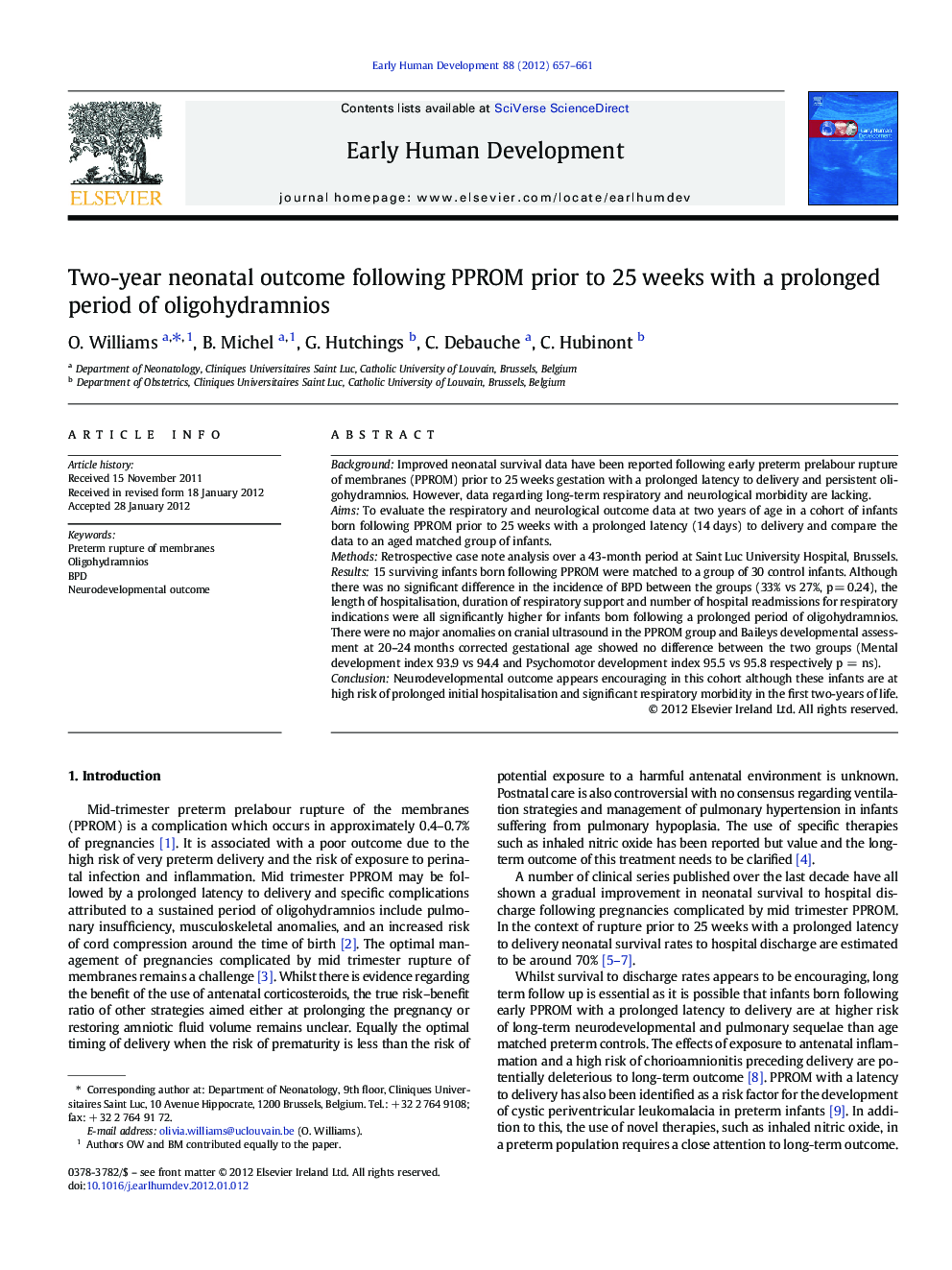| Article ID | Journal | Published Year | Pages | File Type |
|---|---|---|---|---|
| 3916854 | Early Human Development | 2012 | 5 Pages |
BackgroundImproved neonatal survival data have been reported following early preterm prelabour rupture of membranes (PPROM) prior to 25 weeks gestation with a prolonged latency to delivery and persistent oligohydramnios. However, data regarding long-term respiratory and neurological morbidity are lacking.AimsTo evaluate the respiratory and neurological outcome data at two years of age in a cohort of infants born following PPROM prior to 25 weeks with a prolonged latency (14 days) to delivery and compare the data to an aged matched group of infants.MethodsRetrospective case note analysis over a 43-month period at Saint Luc University Hospital, Brussels.Results15 surviving infants born following PPROM were matched to a group of 30 control infants. Although there was no significant difference in the incidence of BPD between the groups (33% vs 27%, p = 0.24), the length of hospitalisation, duration of respiratory support and number of hospital readmissions for respiratory indications were all significantly higher for infants born following a prolonged period of oligohydramnios. There were no major anomalies on cranial ultrasound in the PPROM group and Baileys developmental assessment at 20–24 months corrected gestational age showed no difference between the two groups (Mental development index 93.9 vs 94.4 and Psychomotor development index 95.5 vs 95.8 respectively p = ns).ConclusionNeurodevelopmental outcome appears encouraging in this cohort although these infants are at high risk of prolonged initial hospitalisation and significant respiratory morbidity in the first two-years of life.
